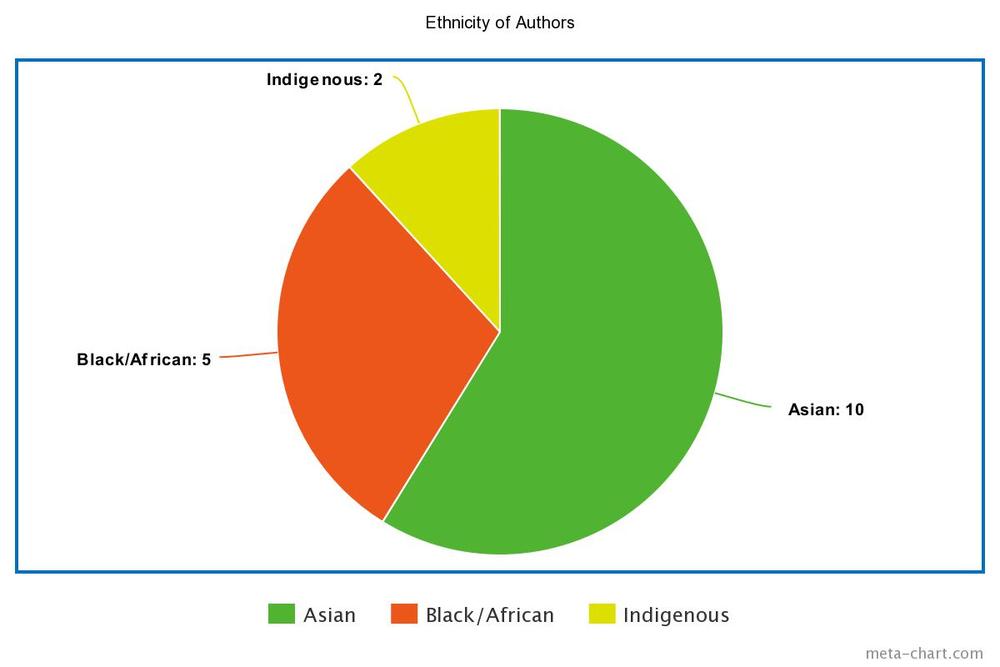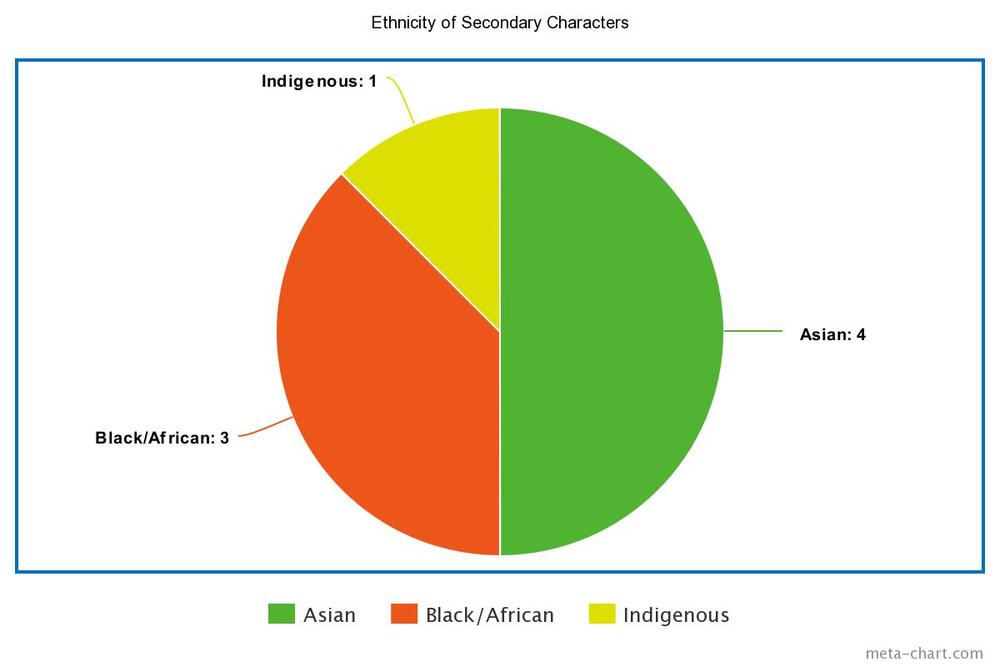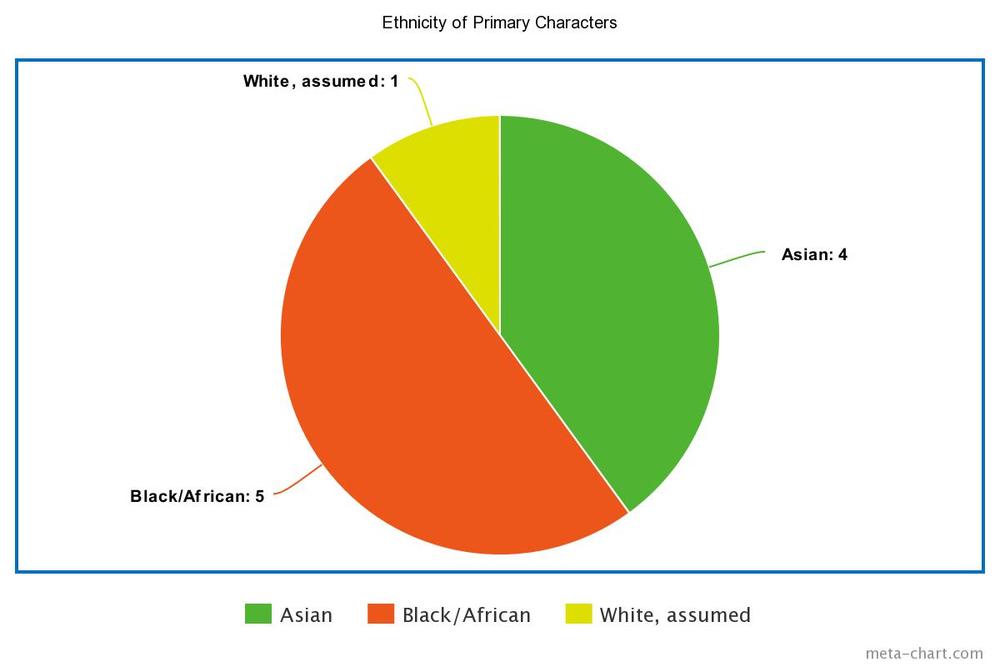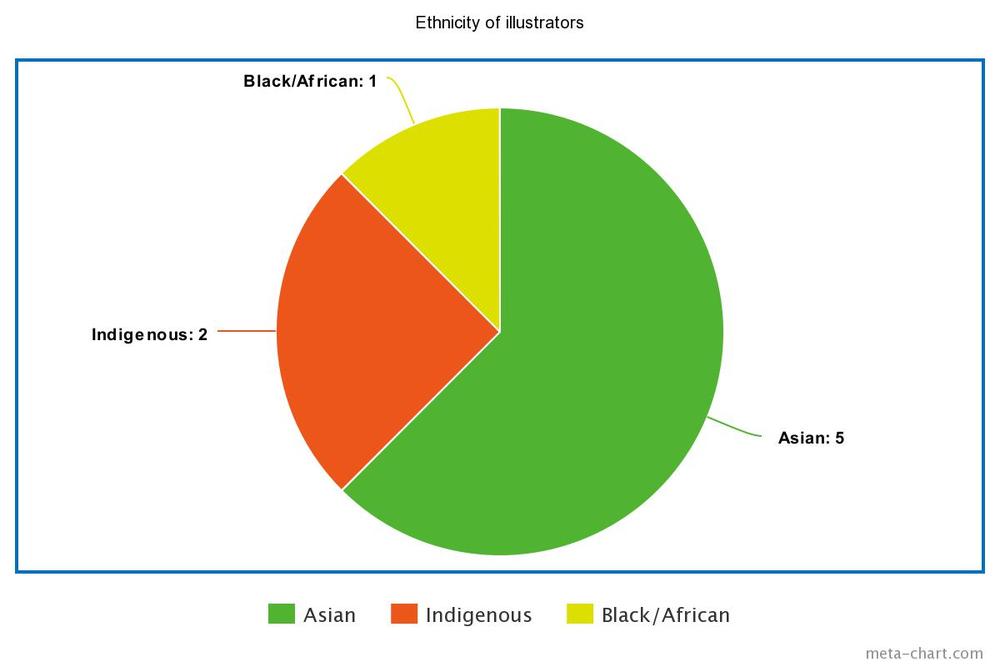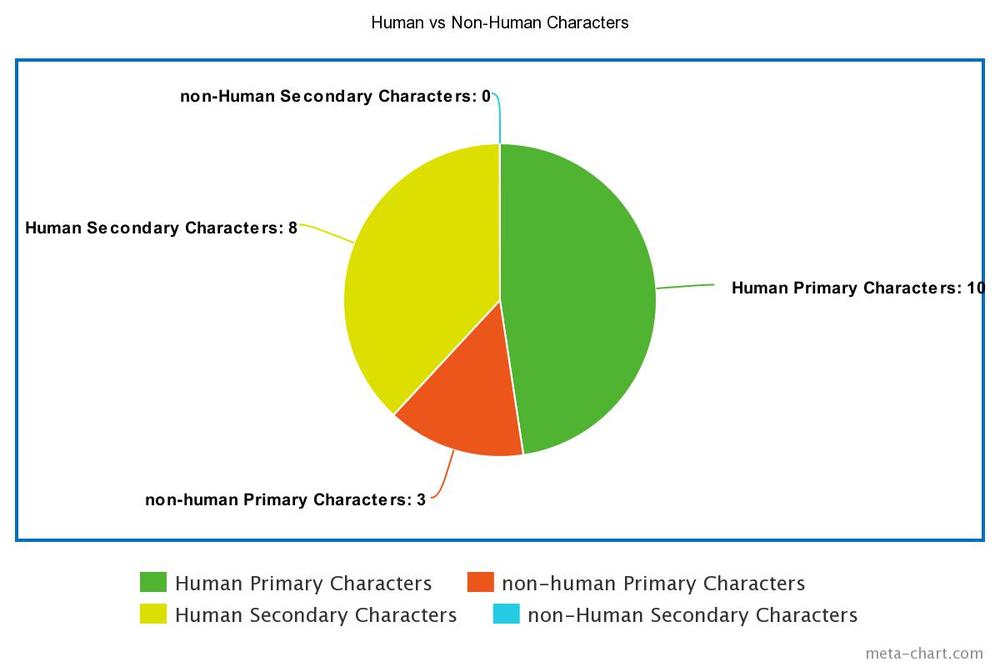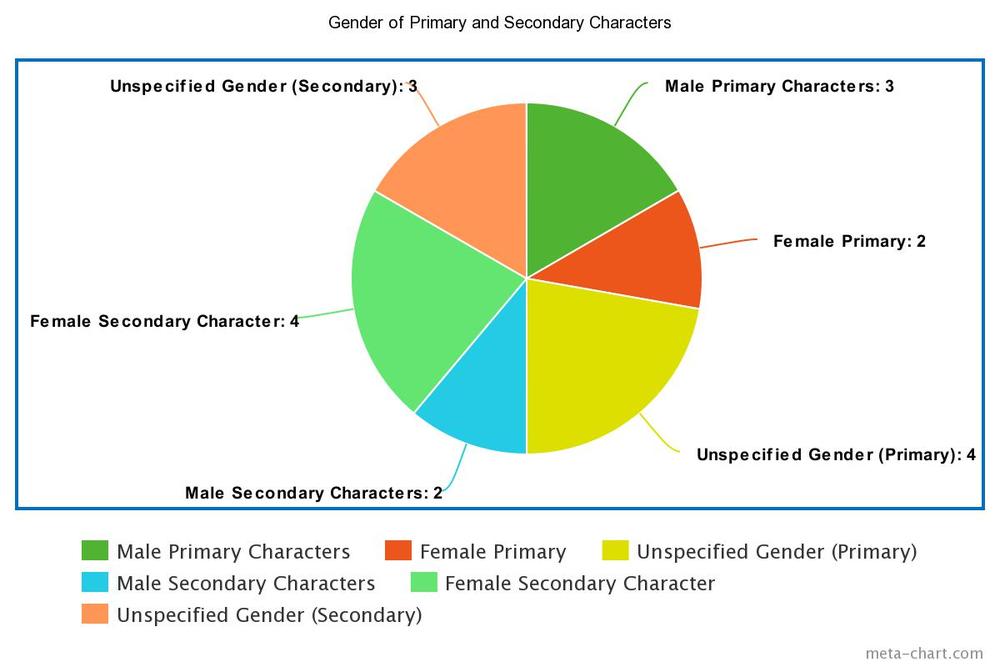What we found
Sampling
During the cataloging process, we gathered the item type metadata for 17 children’s books and their corresponding authors and illustrators. To get the best results and a better understanding of the diversity found in these children's and middle-grade books we organized our findings into three different categories: ethnicity, gender, and human versus non-human characters.
Providing Windows and Mirrors
Scholastic Parents suggests that it’s important for children to read books featuring characters that look like them. These books would create deeper connections with the reader, providing a mirror to identify with. Highly relatable books featuring characters of the reader's background and culture allow kids to make intimate connections with the story. These books also act as windows into other cultures and experiences, creating a deeper understanding of people who are not exactly like them.
Representation for children of color
Most of our authors and illustrators are Asian (60%) followed by Black/African (24%) and Indigenous (16%). This positively correlates with our primary and secondary characters, with the majority of characters being Asian (44.4%) and Black/African (44.4%).
Human versus non-human characters
Interestingly, only 14% of our characters were non-human. Children’s books often depict non-human characters, so why is this display different? Although non-human characters are used to allow the reader to see themselves in the characters no matter what they look like, we are beginning to see a surge of children’s books featuring culturally and ethnically diverse characters.
Gender of authors and illustrators and their characters
Although most of our authors and illustrators are female (89.2%) the gender of characters was almost equal, With the majority of characters' genders being unspecified (38.8%).
What about sexuality?
Within the texts that we have available, there was a lack of representation regarding sexuality. While it is understandable because these are children's books, it is also important that we educate children and that we include storylines with diverse sexual and gender representation as well. One of the only texts that discussed sexuality and gender in an educational manner was the book Being You: A First Conversation About Gender. The other books didn't specify the sexuality of the characters.
Source
“Why It's Important for Kids to See Themselves in Books.” Scholastic, https://www.scholastic.com/parents/books-and-reading/raise-a-reader-blog/why-its-important-kids-to-see-themselves-books.html. Accessed 3 April, 2022.

